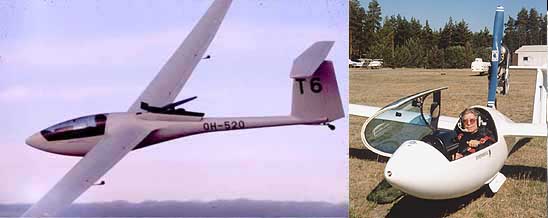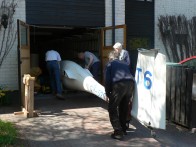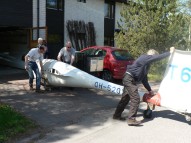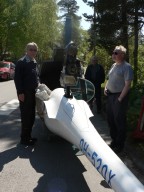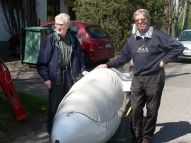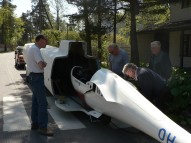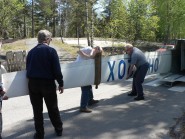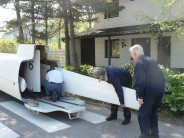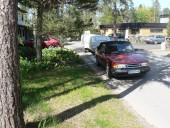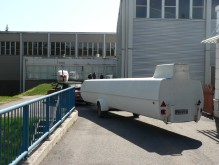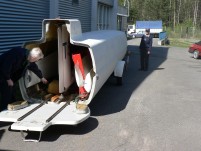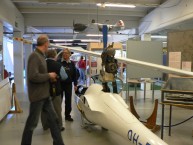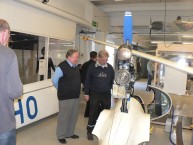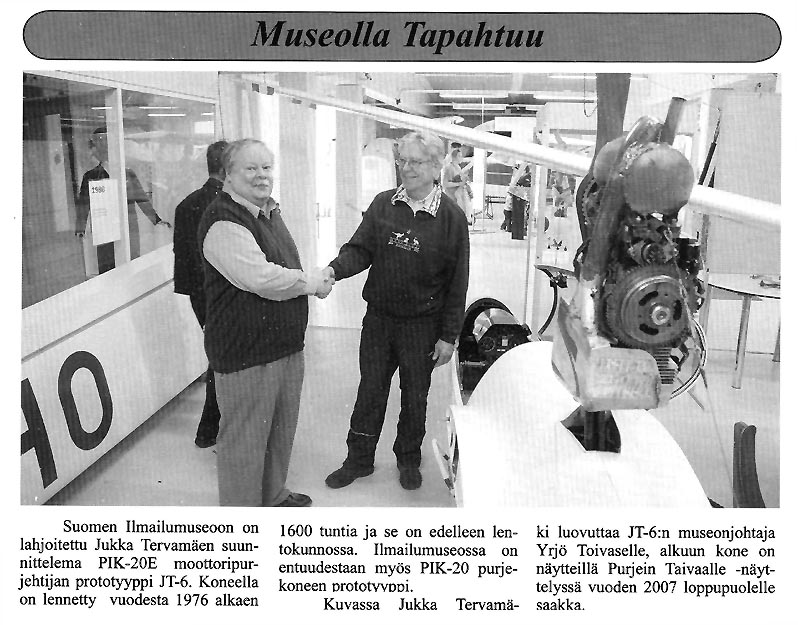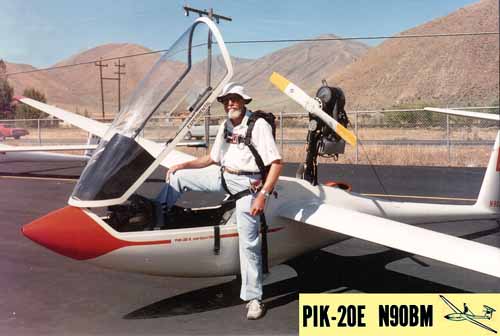|
[ Previous 5 Sites | Previous | Next | Next 5 Sites | Random Site | List Sites ] |
|
|
||||||||||||
|
||||||||||||
JT-6 motorglider, OH-520X, 1976. In 1970 I got interested in soaring after accumulating a few soaring hours in a French/German built RF-4 motorglider. In 1974, after I sold my JT-5 autogyro, I bought a used German ASK-14 motorglider, OH-440. It had a glide ratio of 1:28 and was very nice to fly but I wanted to design something of my own. My dream finally came true when the Finnish company Eiri Avion started to build the PIK-20 B sailplane, an all-fiberglass/epoxy high-performance glider designed by a group of engineers (Tammi, Hiedanpää, Korhonen) in the same laboratory where I had been the manager a few years earlier. In 1975 an agreement was signed between me and Eiri Avion to develop a retractable engine installation for the PIK-20B glider. My designation for the prototype was JT-6 . It is a one-of-a-kind experimental machine used as a test bed for the production model which later emerged as PIK-20E (E for the engine). The modifications necessary to convert a PIK-20B glider into a JT-6 motorglider were as follows: I
first flew the JT-6 in August 1976. Sure, there were numerous
difficulties in the beginning, and the first flight was a near
disaster. The first engine, a Canadian Kohler, was of too low power (33
hp). In addition, the Kohler factory ceased working in 1977 but, luckily
enough, I found a good, new choice, the Rotax 502. It was the first
Rotax 502 installation in an aircraft but it started a boom still
continuing today, most of the present day motorgliders and ultralight
aircraft are Rotax powered. With the Rotax 502 the plane had a climb rate of 3.5
m/s. An article about JT-6 appeared in HOMEBUILT AIRCRAFT, August 1980. I logged 1621 hrs in the JT-6 in 23 years of flying of which less than 5 percent was by power, the rest was soaring. I feel fortunate to have flown in the "golden decades" of Finnish soaring, the seventies and eighties. What I mean by "golden" is that we already had the modern glass gliders and we still had a lot of free open air space in southern Finland. With the growth of Helsinki City and its air traffic plus the new Tampere international Airport and its MIL CTA glider pilots had to settle for a much reduced air space. Download a video clip of my flight in Räyskälä soaring center, The video clip is in mp4-format, 5.4 Mb. JT-6 Suomen Ilmailumuseoon 2007
JT-6 ideasta tilinpäätökseen! Luovutin JT-6 mopuni Suomen Ilmailumuseoon toukokuussa 2007. Sen kunniaksi katson hieman taaksepäin parin sivun verran eli "Idean syntyvaiheet ja tilinpäätös". Ensimmäinen sivu kertoo JT-6 projektin idea- ja kypsymisvaiheesta sekä niistä debateista, joita jouduin käymään Suomen vanhoillisten purjelentopiirien kanssa. Moottoripurjekone katsottiin pitkään "prostituoiduksi jalojen lintujen seurassa". Muutos tapahtui vasta 80-luvulla eli vuosia JT-6:n ensilennon jälkeen. Toinen on tilinpäätössivu eli lopputilastot lennetyistä tunneista vuosittain ja sattuneista vioista ja mokista. Tilastot voivat näyttää pahaltakin mutta jos koneen omistaja osaa itse korjata viat, lentäminen senkun jatkuu. |
||||||||||||
|
PIK-20E was the serial production model of the machine. Two members of the original team who designed the PIK-20 glider at Helsinki University of Technology, Hannu Korhonen and Markku Hiedanpää, took care of converting the JT-6 ideas and mechanisms into a production model based on the PIK-20D. Eiri Avion produced over 100 machines in Finland, of which 90 percent were exports. They later sold the molds and production tooling to Siren Aviation in France, where production continued for several years. PIK-20E has been described in Jane's All The World's Aircraft 1977-1980 edition and in Soaring magazine, February 1979 issue. |
||||||||||||
|
There are many happy PIK-20E owners around the world who have found the freedom of motorgliding a very satisfying experience. One of them is Mr. Robert Lee Moore from WA, USA. His book "AS I KNEW HIM" tells his story and a lot about motorgliding. His letter of March 13, 1990 follows:
Dear Mr. Tervamaki, The most recent issue of the newsletter of our Self-Launching Sailplane Pilot s Association identified you as the designer of the PIK20-E, and also reported on your thoughts about an improved aircraft with a pusher engine. Purpose of this letter is to thank you very, very much for designing the PIK-20E! I am most grateful to you. My PIK20-E was one of the first to come to this country (built in 1979 and received here in early 1980). I have flown it now for ten years and have had a great deal of pleasure with it. I have logged almost 1500 hours, while putting less than 150 hours on the engine, and have had only minor operational problems during that time. Now that I am retired (I will be seventy years old later this year) and can leave it assembled in a hangar, I can fly whenever I wish - without any help from anyone. It is great! Just yesterday I had a nice flight of over four hours and covered 220 miles. A month ago I had a wave flight to 18000 feet (our field elevation is 400 feet). In June and July I hope to take it to Minden, Nevada (site of next year's Internationals) and try for the 1000 kilometer diploma (I probably won t succeed but should have some interesting adventures). As with anything as complicated as an aircraft, there are a few things about the PIK20-E that I wish had been different. Difficulty of taxiing or launching in a cross wind is one. The problem you mention - going up on the nose and scraping the belly at full throttle is another. I also wish that the battery was more assessable, that the factory had provided mountings for an oxygen bottle, and that there was more luggage space. But these are relatively minor things. I am very happy with the aircraft. Thank you for making it possible for me to have this wonderful motorglider! Very truly yours
ROBERT LEE MOORE |
||||||||||||
|
|
||||||||||||
|
|
|
[ Previous 5 Sites | Previous | Next | Next 5 Sites | Random Site | List Sites ] |

